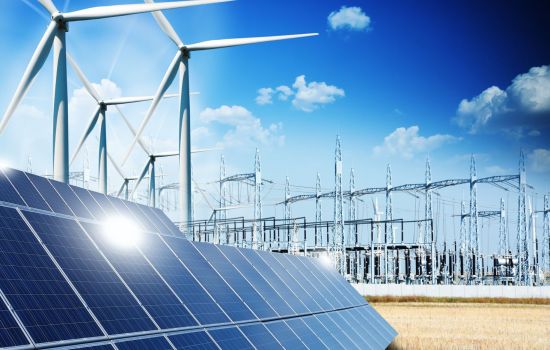Solving congestion behind the meter
Use the flexibility of your heat pump. Our energy grid is becoming congested. Companies can no longer establish or expand and sustainable investments have to be stopped. Techniek Nederland (a Dutch Industry associaton) contributes solutions by applying load balancing and peak shaving. By controlling the heat pump or chiller in your own building more intelligently, peaks can easily be avoided. This allows you to realise a building with less contracted capacity, make it more sustainable and/or relieve the energy grid at peak times. VBoptimum is an expert in smart control and has extensive experience in this field.

For over 15 years, optimisation methods have been considered within an innovation department at Priva. The foundations were laid by Theo Rieswijk. As a graduate and doctoral system and control engineer from TU Delft with a solid background in mathematics and physics, he came up with an alternative to the traditional method of climate control. Instead of instantaneous control, often based on a current outdoor temperature, algorithms start planning and control based on predictions. Predictions built on physical knowledge of the building, its energy processes and starting from the user, i.e. the conditioning of the rooms in the building. By calculating the future use of heat or cold, the building can be conditioned more efficiently. And can simultaneously take into account energy availability. VBoptimum has embraced this technique and, together with Priva Lab for Innovation, has already successfully applied it in many buildings.
Instead of using smart measurement and control technology to respond to events (such as a current outdoor temperature), we create a model of the building in which algorithms predict 24 hours ahead how much energy is needed for cooling and heating. These predictions are used to control heat pumps, chillers and air handling units. The aim is the lowest possible energy consumption with the best possible comfort. It is pure science. With a 'Digital Twin' that has knowledge of, among other things, the insulation of the façade, the accumulation of the building and the properties of the various components in the installation. With this knowledge, mathematical algorithms calculate 'the integral optimum', for the next 24 hours. The desired temperature in the building, at the lowest possible cost. Taking into account all significant influences such as solar radiation, heat losses, dynamic energy prices, efficiency of installations and so on.
But what does this mean for the energy transition? And how can you use this to prevent congestion, for example? To understand this, think of the building as a thermal battery. Between and in the walls and floors (the so-called fixed parts), in all the ducts, pipes and possibly in buffer vessels, heat or cold is stored. This thermal energy, often created with a heat pump, can be used flexibly. For example, if congestion is imminent in the morning from 07.00 onwards, the algorithms will take this into account. The model knows the building, knows how it is insulated and, with that knowledge, will pre-heat or cool the building so that the use of the heat pump will be limited at 07.00. Or if we know at a certain time of day that later that day the solar panels will produce electricity, the algorithms will take that into account and will deploy this cheap renewable energy as usefully as possible to make heat or cold.
Conclusion is that grip on, and understanding of, climate systems in buildings will play an important role in the energy transition. Thermal energy (heat or cold) is slow and the better insulated the building, the more thermal energy can be stored. This inertia fits perfectly into the energy mix in which wind, solar and other storage systems will play a role.
The benefits of VBoptimum and ecoBuilding's algorithms:
- Energy savings of 15-30% on average;
- Payback period of investment less than 5 years;
- Optimal comfort and control of installations and consideration of future solar irradiation;
- Optimal use of renewable energy sources such as solar panels;
- Preventing congestion by cleverly controlling heat pumps (this is optional and only useful for the customer).
Want to know what we can do for your building? What the business case looks like and how we approach it. Then get in touch with us.

